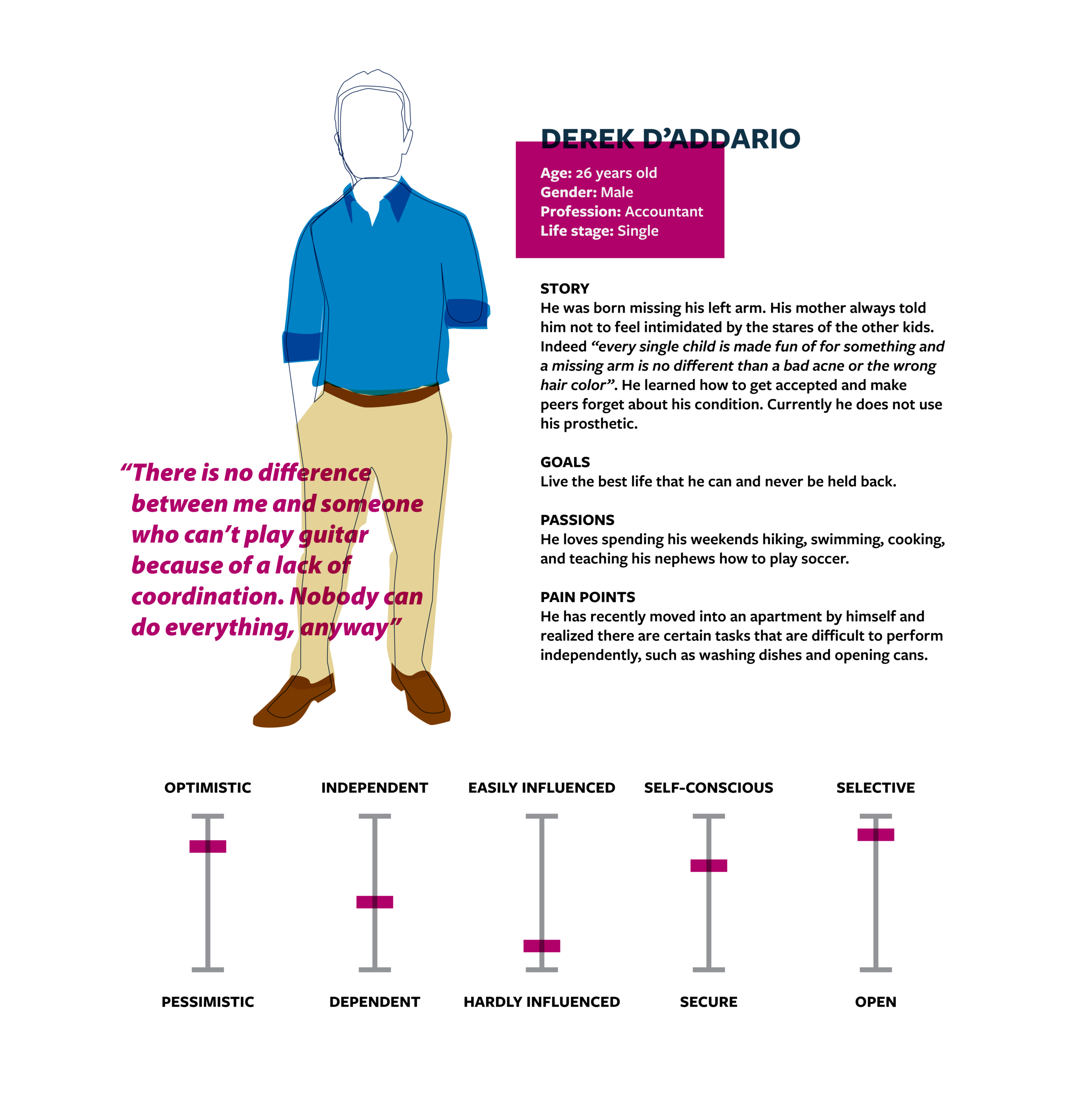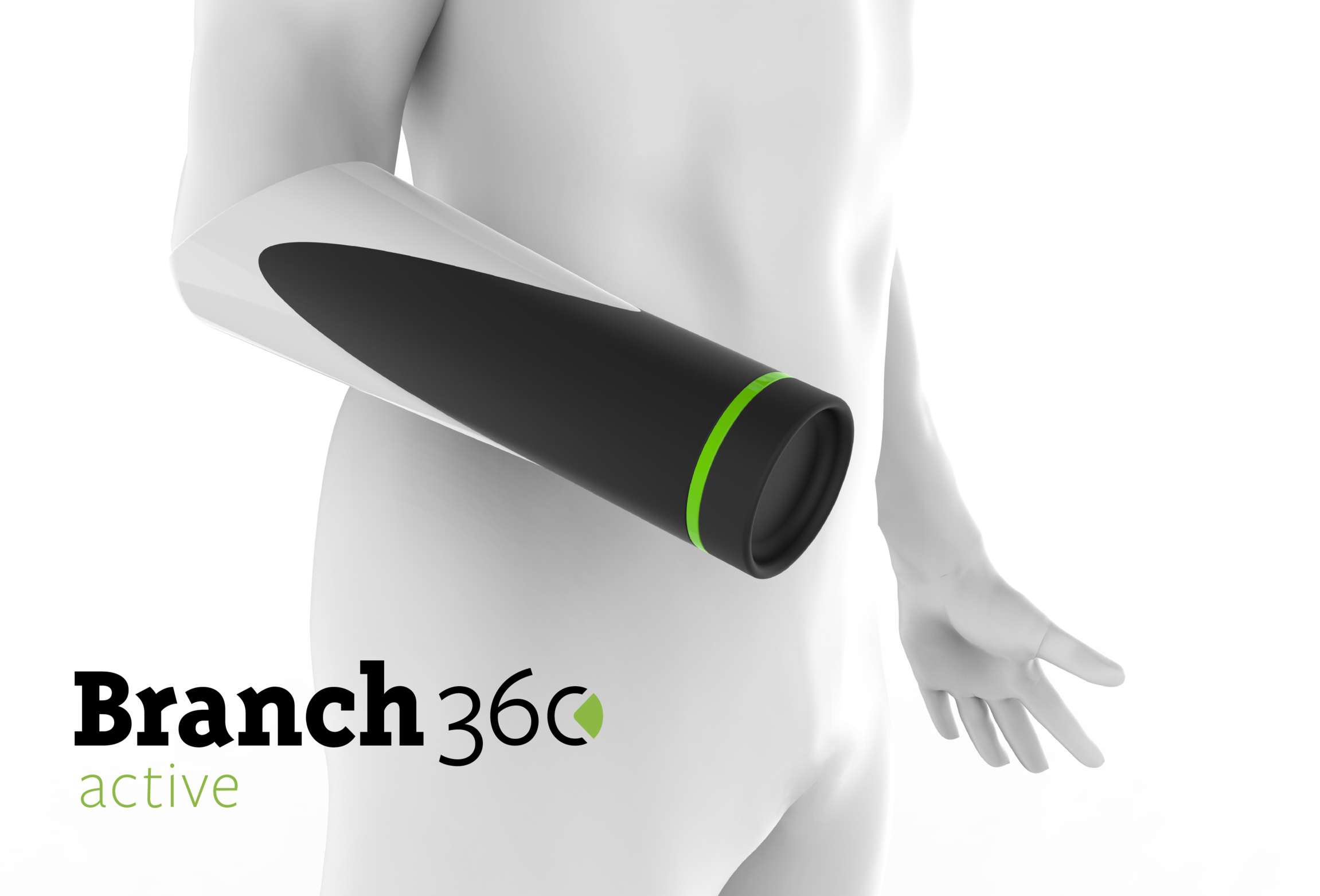
Branch360: Design Thinking for Upper Extremity Prosthetics
UX Research & Design | Service Strategy & Design | Product Design | Brand Strategy & Design | UI Design | Entrepreneurship | Editorial Design
Thesis Team Project | M.P.S. Design Management (SASD+Trefz School of Business)
According to the National Center for Health Statistics, 50,000 new amputations are performed annually in the United States alone. Seventy-seven percent of these are caused by traumatic accidents, as opposed to congenital or chronic conditions. Situations ranging from automotive, agricultural, and manufacturing accidents, to a child playing with firecrackers, affect this statistic. Based upon insight gleaned from end users of prosthetic technology, current prostheses are subpar in function, which leads some amputees to forgo their use entirely. These design flaws stem from a lack of understanding by prosthetic designers of the practical challenges of living as an amputee.
PROCESS
1. Field Research: Research started with in-depth contextual interviews and observations with upper-extremity and lower-extremity amputees, orthopedic surgeons, mechanical engineers, and CPOs (Certified Prosthetists and Othotists). Simultaneously, we performed secondary research through the comparative analysis of the different kinds of prosthetics in the industry and the inspection of usage analytics.
2. Synthesis: Once the data was gathered, we analyzed and synthesized it into personas, journey maps, and ecosystem diagrams. This helped us formulate a list of the most prominent insights and challenges to be addressed.
3. Brainstorming: We dived into a fast-paced brainstorming which led to multiple eclectic ideas. Consequently, we narrowed the list down until we had a unique solid concept.
4. Prototyping: "Fail fast" is the first rule of prototyping. We tweaked the design of both the product and the service several times, trying to find the simplest solution that solved the needs of our audience.
5. Evaluation & Validation: Once the prototype was ready, we presented it to users and clinicians, receiving precious feedback that gave us the opportunity to further enhance the product and also the business plan for the idea.
SOLUTION
The solution addresses the three main problems—functionality, sustainability, and affordability—through the development of task-driven tools which help patients pursue their passions, remain independent, and stay active.



















